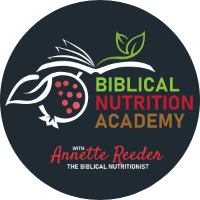
One of the challenges in eating healthy is keeping fresh food available. Fresh is always best, but not always available. From the options for enjoying God’s bounty out of season, dehydrating is one of the best. And I’m excited to share with you a dehydrated food guide: dehydrator, oven, benefits, and recipes.
I love dehydrating food for many reasons, not the last of which is having healthy, nutritious, delicious snacks always available for my precious grandchildren when they visit.
Want healthy food available for your kids to eat for snacks? If that interests you as much as it does me, keep reading.
Dehydrate Food At Home
Have you ever wondered if you should be dehydrating foods?
Maybe you’ve never thought about it, but you landed here and clicked on this post out of curiosity.
Perhaps dehydrating your own food sounds intimidating, impractical, or expensive.
Let me lay all these concerns at rest!
Not only is dehydrating food at home practical, it’s much simpler and less time consuming that most people imagine.
It certainly wasn’t as scary as I first thought years ago. Surprisingly, it’s one of the methods of healthy food prep I delayed on when I started our health journey. I wish I hadn’t waited so long.
This is a cooking method where I truly feel I can’t go wrong. It’s almost impossible to mess up and the end results are blessings that last and last and last.
That’s why I want to share how to dehydrate foods and all its benefits.
Just like my videos, courses and blog posts, this is part of my mission to help you feel confident in the kitchen, confident in cooking healthy for your family, and overall confident in understanding just how much God loves.3 Reasons To Dehydrate Food

Learning how to turn an abundance of produce is one more utensil in the arsenal of learning how to live the best, healthiest life we can live.
Have you ever experienced an abundant harvest in the garden (either yours or the local farmer’s stand) and wanted to take full advantage of it, but knew there was no way to eat all that produce before it went bad?
Me, too! It discouraged me before I tackled dehydrating and canning.
Whether in my garden or a great sale at the grocery store. I no longer worry about what season we’re in. Instead, I stock up and bring it home to dehydrate.
1. It's economical.
Food Dehydrator prices range anywhere from $100-$300.
I have practice with the $50 ones and I wouldn’t go there. They just don’t work very well.
Then there are the upper level ones in the $300 range. That was a waste of money. They don’t do any better than less expensive models.
The dehydrator I bought is only about $100 ($100 depends on what the sales are) and it does a perfect job.
That might sound like a big investment for some people, but you’re going to save money making your own dehydrated food for years to come.
There’s also the option of using your oven, although there’s a bit more time and oversight involved, as most ovens don’t have low enough settings for the ideal temperature. However, oven drying is possible!
And perhaps your oven has a warming drawer, which operates on very low heat, that can be used for this purpose.
2. It's simple.
Dehydrating is so simple, even children can do it.
Younger children will need help dicing and slicing fruits, but with something like kale and spinach, they simply need to be washed and laid out on a tray or pan.
Once the food is laid out, it goes in the oven or dehydrator and sits - for hours. The main time involved is prepping the food. Then (especially when using a dehydrator), you can forget it until time is up.
It’s near impossible to burn food that’s being dehydrated, since the oven/dehydrator cooks at such a low temperature. I often leave it overnight to do the job while I’m sleeping. In the morning, the food’s ready, but even if I’m busy I can leave it until I have time.
3. It provides long-lasting healthy food.
It’s just the best way to preserve food. I can store these in my pantry for years and I don’t have to worry about the power going off or having adequate freezer space.
The health department says a year, but if the food is stored in air-tight containers kept in a cool, dark area, they’ll last and last.
Since the process just removes the water, what’s left is the protein and fiber all of the goodness of God put in these foods.
While freezing and canning are also great ways to preserve food, dehydrating has unique benefits, not the least of which is a longer shelf-life.
Dehydrated Food Machine

As I said above, a dehydrator is not necessary to dehydrate food, but it sure is helpful! And it’s not an overly-expensive kitchen appliance.
Many companies make good dehydrators, but my favorite is the L’Equip FilterPro. This machine has a filter in the bottom which the air goes through before circulating inside. This means the impurities have been filtered out of the air blowing across the food.
The machine has a timer and a temperature gauge. You simply set these and move on with your day. It couldn’t be easier.
The FilterPro can be set to cook up to 24 hours.
The temperature goes as high as 158, but won’t use that high a temperature for fruits and vegetables. The ideal temperature for these is between 105 and 115.
This way, the produce retains all of the important enzymes, vitamins, and minerals. Remember we’re only getting rid of the water and when you dehydrate at low temperature, we’re preserving the nutrients.
Have I excited you about dehydrating yet?
I hope so!
Below are my favorite foods to dehydrate and how I use them.
Dehydrate Fruit
My grandchildren come to my house and always know they have some delicious healthy snacks available (OK, for me, too!). Fruits such as strawberries and watermelon are the favorites.
Dehydrated fruit is the perfect go-to food anytime your children, grandchildren, or maybe yourself or your spouse need a treat.
Take it on hikes and long bike rides. You will be inspired to dehydrate even more often as you enjoy these incredible treats.
I have several videos where I walk through the process of dehydrating strawberries, pineapple, mango, and watermelon. It’s super simple and I love sharing these tips and experiences with you, so I encourage everyone to check these videos out.
Other fruits such as apples, peaches, and cherries are also great candidates for dehydration.
Fruit Dehydrating Notes
I start with chopping the fruit. For pineapple and mango, I dice them into bite-sized cubes. As long as the chunks are uniform in size, it doesn’t matter what size they are.
A quick note on pineapple, a lot of people throw the center core away but there’s a lot of nutritional value in that center. I never throw it away. Try adding it to the tray and see what you think.
With strawberries, it depends on the size I’m starting with whether I halve them, quarter them, or dice them smaller.
For watermelon, I slice them into strips. Doing this causes the end product to be natural fruit leather. (SO much better than store bought “fruit” leathers.)
Usually watermelon doesn’t last long enough for me to do anything with it other than just eat it with our family, yet when I have extra I love dehydrating it.
Watermelon takes a little bit longer than other fruits because it is watermelon.
There’s no hard and fast rule to sizing fruit to dehydrate. Just play around with it and see what works.
Perhaps you’re planning on rehydrating something for a future pie or other dessert. Or maybe you want it to incorporate into a trail mix. Or to have on hand for a quick snack.
As you experience the process and use the fruits, you’ll soon figure out what works best.
How To Dehydrate Fruit

Once they’re diced or sliced, place them here on a dehydrator tray.
If you don’t have a dehydrator, that’s no big deal. You can easily do this in the oven at 150°. Use a baking sheet lined with parchment paper to keep the fruit from sticking.
Fill this entire tray if there’s enough diced or sliced fruit. I like to work in big batches to make the most of my time, but that’s not always possible.
If there isn’t enough to fill the entire tray, that’s OK. It doesn’t matter if you fill it all the way up or if it’s just partially full. The process will still work the same.
You do, however, want to make sure the fruits are laid out in a single layer.
Dehydrate Food In An Oven
When using the oven, I put my fruit on the parchment paper-lined pan and set the oven to 150°, or as low as you can get it. I prefer lower, but most ovens don't go lower than 150. Opening the door would be a good idea, too.
Although you don’t want your oven and air conditioner battling each other all day!
Perhaps test your oven and see how long it holds temperature. Turn the oven on until it’s at its lowest temp., then turn it off, letting it rest closed until it reaches below 100 degrees.
Once you’ve figured out the time needed for this cycle, use a timer on the oven or phone to remind you to turn it back on when needed.
After the fruit is in place, let it dry. Overnight (about 10 hours) is often good enough. Or from morning to evening. It won’t hurt to leave it in a dehydrator for a full 24 hours or more. There’s no danger of it burning there.
This is one of the things I love about the dehydrating process. I can just do it when it’s convenient.
Keep the fruit in the oven or dehydrator until it’s dry to the touch. You’ll know it’s completely dry when it’s crisp when you can snap it when you can break it apart.
Dehydrating Vegetables - How To Dehydrate Kale

Kale is a great vegetable to dehydrate. Why? It’s one of those amazing cruciferous vegetables jam-packed with loads of nutrition.
It’s so nutritious and a super food in my category.
I often also add spinach to my kale, as they make a great nutrition combo.
First, as with the fruit, wash them off. There’s no need to dry them before placing them on the tray or pan, but you may want to put them through a spinner or pat them dry if you don’t want extra drying time.
I leave the stems on, as they’re just as nutritious as the leaf and the texture difference isn’t noticeable when they’re dried.
These power greens can be layered. These are going to reduce way down as they dry!
When using a dehydrator, fill up all the trays possible, putting one tray on top of another tray, on top of another tray, and turn it on to about 100° - 115°.
By morning (or the end of the day, or the next day), you have dried dark, leafy greens.
It won’t look like much, but that little bit goes a long way. And remember, it’s still packed with all of the original nutritional value.
I once had an abundance of kale and cut it down and dried it. Three weeks later, I looked out the window and the kale had regrown. I went to the garden again and cut a second batch and made another great big bowl of dehydrated kale.
That winter I ended up with over 6 quarts of dehydrated kale we’re still using today.
Dehydrated Kale Powder

Dehydrated kale (and spinach) can be left as chips or ground to a powder. This second option is my preference.
We talked previously about how economical dehydrating is. Here’s one place it packs a powerful punch.
1 tablespoon of kale and/or spinach is equal to a cup or more of fresh.
If you powder it down to the smallest possible, it might get down to a teaspoon. Can you imagine a huge cup going down to a teaspoon?
Since kale is a cruciferous vegetable and spinach is a nutrient-abundant dark, leafy green,that small amount is packed with:
- Antioxidants
- Anti-cancer properties
- Anti-inflammatories
- Vitamin C
- Fiber
- Enzymes
- And so much more!
A mason jar of kale probably has a market value of $30. And that will last for a long time at 1 teaspoon at a time in: smoothies, casseroles, scrambled eggs, veggie dip, salad dressing, plus other ideas.
Dehydrating Onions

Now when we are dehydrating onions, it doesn't really matter how we chop them up, we just need them to be somewhat more of uniform size and shape.
We can slice them however we want. I don't have to make them beautiful, I don't have to make them all the same shape, whether they're a circle or triangle or whatever, I kind of just want the same thickness.
So however you chop them up, we're looking for the same thickness to dehydrate at the same time.
Putting the onions through a food processor is also a great option.
Now if you're like me, and you're gonna tear up from chopping onions, you might want to freeze the onions for an hour first, and the crying will not be a problem..
When it comes to dehydrating onions, you can blanch the onions first, and that’s quick. One minute in some boiling water, then in some cold water, and they will actually dehydrate faster.
To dehydrate in the oven, set it at 125 degrees Fahrenheit.. Depending on how the oven works, you may have to set it at the lowest temperature and then maybe leave the door open just a crack. It is best to keep an eye on it. So you can definitely do this in the oven.
10 hours is ideal.
When dehydrating in the oven,keep checking the progress. So after you get past six hours, then I would start checking on it every hour or so.
How To Store Dehydrated Food

Glass canning jars are the best place to put dehydrated food.
My favorite way to store dried fruits and veggies is in mason jars. The key is to seal the jar nice and tight. There’s no need to use lids and rings that seal, however. A well-tightened reusable lid will work fine.
If you ever see the canning jars at a garage sale, they’re perfect for dried foods because they keep the moisture out.
Dehydrating Food For Long-Term Storage
Keep in mind that your hands need to be perfectly dry and not have any lotions on them. Water and lotion can get transferred to the dried food.
If you think there’s any chance that you have moisture or lotions, then use gloves when you’re handling your dried fruit or other dried foods.
Using a spatula or spoon to scoop it is also a good option.
My pantry is very dark, and I keep my dried foods in the back corner so they are out of the light. This will help your dehydrated food last even longer.
I love the looks of my pantry with our mason jars lined up with my canned and dehydrated foods showing off God’s bounty
When you dehydrate, but don’t get around to putting it up right away, check the food before putting it away. If it’s become soft, stick it back in the oven or dehydrator a bit longer before storing. Food must be perfectly dry to store well.
In dehydrating class we say dried food is good for a year, but that’s just the government rule.
It can actually remain good as long as you keep it dry.
Dehydrated Food Recipes

Now, I’m not including actual recipes here because the possibilities of using dehydrated fruit and vegetables and other types of foods are endless.
They make a great snack or addition to your favorite meals.
Here are a few ideas on ways to use dehydrated foods:
- Add some kale powder to
- Spaghetti
- Quick bread
- A smoothie
- Pesto
- A salad
- Use dried strawberries and figs to make a pie
- Add dehydrated onions to
- Soup
- Taco meat
- Sauteed vegetables
- Topping on a salad - yes these are better than canned fried onions from the store - trust me
- Lay out various dried fruits and nuts for the family to make personalized trail mix
- Fix a small bag of dehydrated strawberries, bananas, mangoes, or pineapple for camping, hiking, or backpacking.
Dehydrated Food Tips

There’s no limit to what you can do with dehydrated foods.
One note of caution: It’s easy to eat a little bit too much. Dehydrated food weighs less and it’s easy to grab a handful. However, a handful are packed with more nutrition and calories than the same amount hydrated.
It’s good to be conscious of how much you’re eating when it comes to dehydrated foods. You don't need very much.
Plus, once dehydrated food hits your stomach and starts rehydrating, it’ll fill you up.
I could go on and on! We’ve just touched the surface of possibilities on dehydrating food and how to use it. There are many more vegetables and fruits, not to mention herbs and spices.
I talk more about dehydrating and many other methods of preserving food and preparing for unpredictable events and upheavals in life in my book Proverbs 31 Prepper.
Dehydrating food is just one way to see that the Lord is good and how He’s blessed us.
Today is about tasting and seeing God‘s goodness. When you realize how food is an example of God‘s love for us, then you’ll trust Him more and more in every area of life.
Share below what your favorite types of food to dehydrate, what are your favorite ways to dehydrate, and your favorite recipes where you use dehydrated food.
I would love to see your comments leave them on our Facebook page and I look forward to reading about your episodes of dehydrating.







So glad you enjoyed this article!
Thanks for this great information!